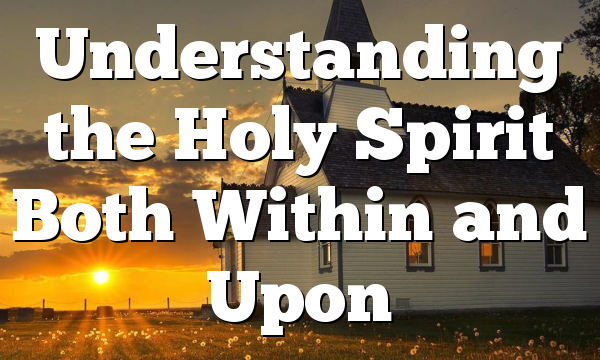Click to join the conversation with over 500,000 Pentecostal believers and scholars
Click to get our FREE MOBILE APP and stay connected
| PentecostalTheology.com



Based on reading just the Leviticus accounts, I conclude, surprisingly, that it was the blood of the burnt offering animals that provided atonement for the priests and people of Israel (16:24), and that, actually, the blood that was applied in the Most Holy at the Mercy Seat did not provide atonement for the priests and people. Please consider the following:
The reading of Leviticus 16:17 as "…until he come out, and have made an atonement for himself, and for his household, and for all the congregation of Israel" seems to imply that atonement for the priests and atonement for the people has already been done by the application of blood in the Most Holy and the Holy. But as far as I can tell it seems that Leviticus 16:17 can be differently and properly translated to read as "…until he come out, and make an atonement for himself, and for his household, and for all the congregation of Israel," thus implying that although the Most Holy (with its Mercy Seat) and the Holy (with its Golden Altar) have thus far been purified and cleansed, yet the steps of providing atonement for the priests and for the people has not yet quite been done.
I note that Leviticus 16:24 says that the High Priest, after washing and then putting on all of his garments, for the last and final time shall "come out, [Hebrew "come forth" = "come out"] and offer his burnt offering, and the burnt offering of the people, and make an atonement for himself, and for the people." This would seem to be the reasonable point at which the prohibition of Leviticus 16:17 — "and there shall be no man in the tabernacle of the congregation when he goeth in to make an atonement in the holy place, until he come out" — would end, that is, after the Priest has taken off garments, washed, and put garments back on.
If this connection of Leviticus 16:17 to Leviticus 16:24 is correct, then in view of Leviticus 8:14-15, we would have more compatibility with the sin offering procedures of Leviticus 4:1-12, 13-21, 22-26, 27-31, & 32-35, in which blood is sprinkled and/or applied to altar horns (both golden and brazen) for atoning/purifying/cleansing things to continue their suitability to be used, and yet all remaining blood is poured out at the base of the brazen altar for atoning people.
If there is merit to this, then one can see in Leviticus 16 a precise scripture identification of the five steps in the concluding summary verse of Leviticus 16:33:
- And he shall make an atonement for the holy sanctuary [verses 14-16a]
- and he shall make an atonement for the tabernacle of the congregation [verses 16b; Exod. 30:10; Lev. 4:5-7, 4:16-18]
- for the [brazen] altar [verses 18-19]
- and he shall make an atonement for the priests [verse 24]
- and for all the people of the congregation [verse 24]
Leviticus 8:14-15 informs of the principle that Tabernacle objects must be cleansed/purified/atoned before they are used to cleanse/purify/atone for people. Because sin-offering blood is used for the purpose of cleansing objects, the sin-offering animals were first to be slain and a small portion of their blood was applied for this purpose. Also, it seems reasonable that the sin-offering scapegoat would be dispatched to carry away all of the sins of the priests and the people before atonement was done for them. Although the sin offering procedures of Leviticus 4 all stipulate that the main and remaining portion of the blood is poured out at the base of the altar, yet there is no mention of this in Leviticus 16. After the procedure for providing atonement for the priests and the people with the burnt-offering animals was finished (verse 24), then the remaining sin-offering procedures to burn the sin-offering fat on the altar (verse 25) and burn the sin-offering animal bodies (verse 27) were carried out. In accordance with Leviticus 4 direction, the main and remaining portion of the sin offering blood would have been poured out at the base of the altar at this time also, i.e., sometime after verse 24, and thus completing the sin offering atonement process to provide atonement additional to the burnt offering atonement.
So then, my question is: In Leviticus 16, was it the application of blood in the Most Holy on the Day of Atonement that provided atonement for the priests and for the people of Israel, or was it rather the blood of the burnt offering animals of Leviticus 16:24 that did this?




Anonymous
my understanding is ALL Link Hudson John Mushenhouse Duane L Burgess